Guitar strings can break on their own for two primary reasons: due to the oxidation process, the guitar strings become degraded and weaker, coupled with the continuous tension on the string over a long period of time, as well as the expansion and contraction of the wood from changes in moisture.
Other reasons include: the bridge being too sharp; the wrong type of strings being used; there are rough edges on the frets; the nut being worn down; or because of burred tuning posts. Let’s explore each reason why your guitar strings might snap on their own.
Why Your Guitar Strings Snap
1) Tarnishing or Rusting On Account Of Age And Continued Use
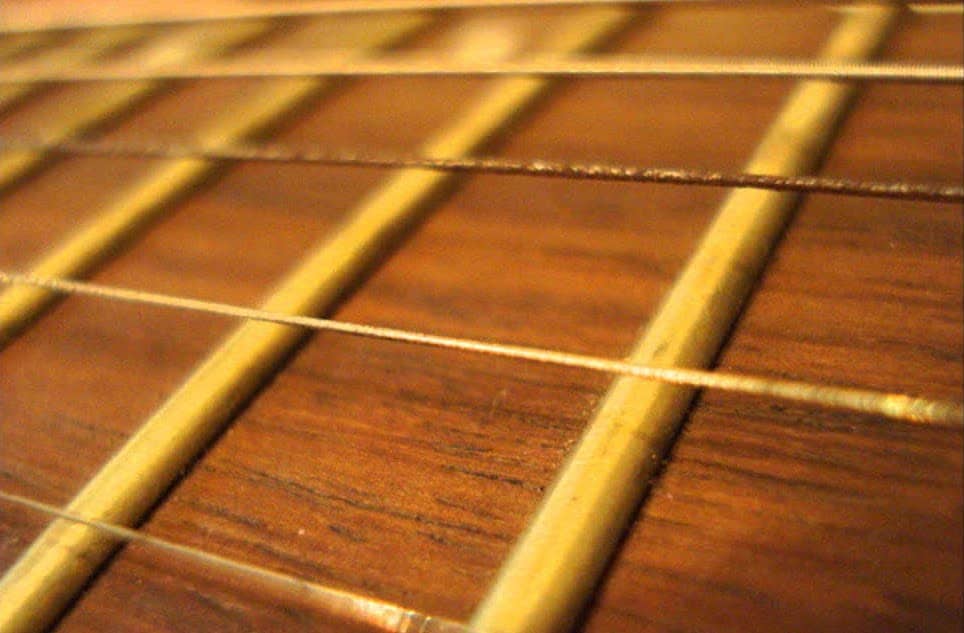
As I wrote about in my article on whether or not guitar strings rust, typically, guitar strings are plated with a nickel-alloy, particularly electric wound guitar strings, however, the nickel-alloy on the outside doesn’t actually rust, it’s just the steel/iron in the core of the string that’s susceptible to rust.
Truthfully, while it’s possible for your guitar strings to rust, what you should be more worried about is your guitar strings tarnishing, which means there is a thin layer of gunk over top of the strings that contributes to the sound’s quality or lack of quality.
However, if your guitar strings really are extremely old and have been subjected to sub-optimal humidity control and oils/dirt/grime from your fingers, it can cause an increase in susceptibility to rusting through the oxidation process of the steel/iron at the string’s core.
If you want to keep your strings from breaking and also ensure their quality over an extended period of time, a good method is to clean them after each use, including through the use of a solid string cleaner as well as a micro-fibre cloth.
A lot of people argue about when is the best time to change your strings, but truthfully, I would say that it depends on how much you play the guitar and how often you expose them to different elements, including humidity, temperature changes, and so on and so forth.
Like I said in my guide on this topic, I think the best time to change your guitar strings is every month and a half, assuming you play every single day for at least an hour.
After about a month and a half, I find they start to sound kind of dead, and when played through the amplifier, they have this nasty sound to them.
2) Expansion and Contraction Of The Wood Due To Changes In Moisture

As I explained in passing above, wood expands and contracts in relation to the humidity of an environment. Wood expands when there is more moisture in the air and it contracts when there is less.
When the guitar expands, there is an increased amount of tension on the guitar string, which means that coupled with the gradual degradation of the string, there is a higher chance it’ll snap.
For this reason, you might find that one of your strings has snapped when you open up your guitar case in a new environment.
Obviously, if the string has become tighter and it’s also compromised on account of its age, you’re more likely to snap it when you bend the string, assuming you’re the type of player who uses a lot of bends.
3) The Nut
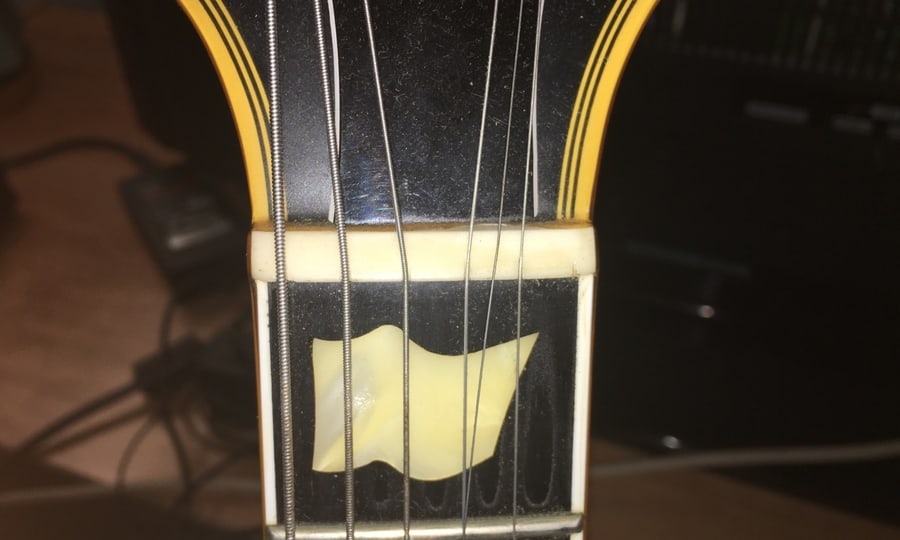
Another thing that causes problems with your guitar strings is the nut, which is the bottom of the headstock piece, and the top of the fretboard, where the strings lay flat before they’re inserted into each tuning post.
There can be an accumulation of grime, dirt, dust, oils, etc, that contribute to rough edges in the nut that slowly erode the string’s integrity, and thus cause a snapped string.
The best way to combat this is to take either a very gentle file or a wound electric guitar string to rub it in the nut and remove all of the offending substances.
In some cases, it might even be a good move to replace the nut with a bone nut, which is one of the most commonly suggested things to do to improve the guitar.
4) The Bridge
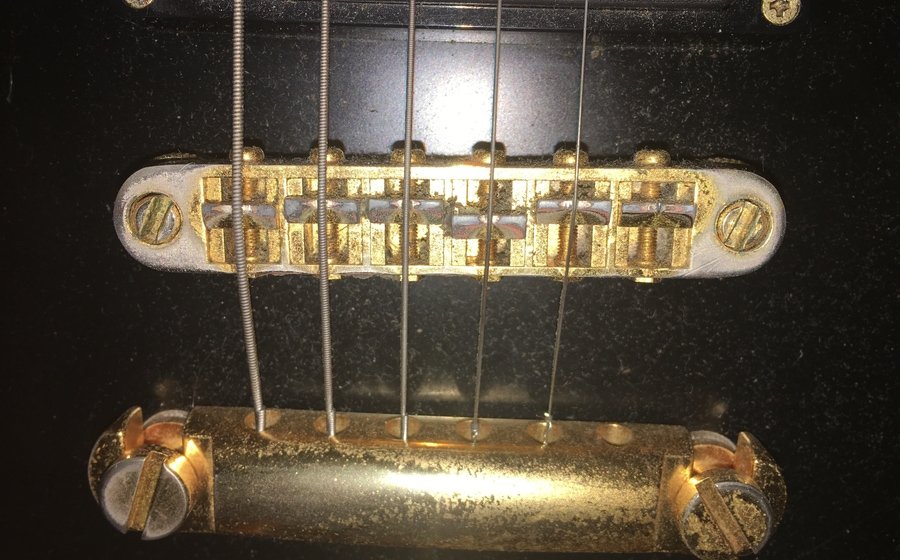
The bridge of the guitar can also cause string breakage because it’s made out of steel, and if it’s extremely sharp or pointy in the saddles, the guitar string, especially when you play the time, rubs up against it and eventually snaps.
What can be done to attenuate this issue is to take some sandpaper or a very gentle file and rub the groove where the string sits. This should have the effect of removing the sharp edges where the string is sitting.
The next time your string snaps, take some time to look at which point of the string it actually snaps, this will help you determine at which part of the string is causing the issue.
For instance, the last time my high-e string snapped, it was around the bridge of the guitar, so I just took a very gentle file and rubbed gently in the saddle to remove any sharp edges or offending parts of the saddle (more about guitar set up and accessories in my guide).
5) Using the Wrong Guitar Strings
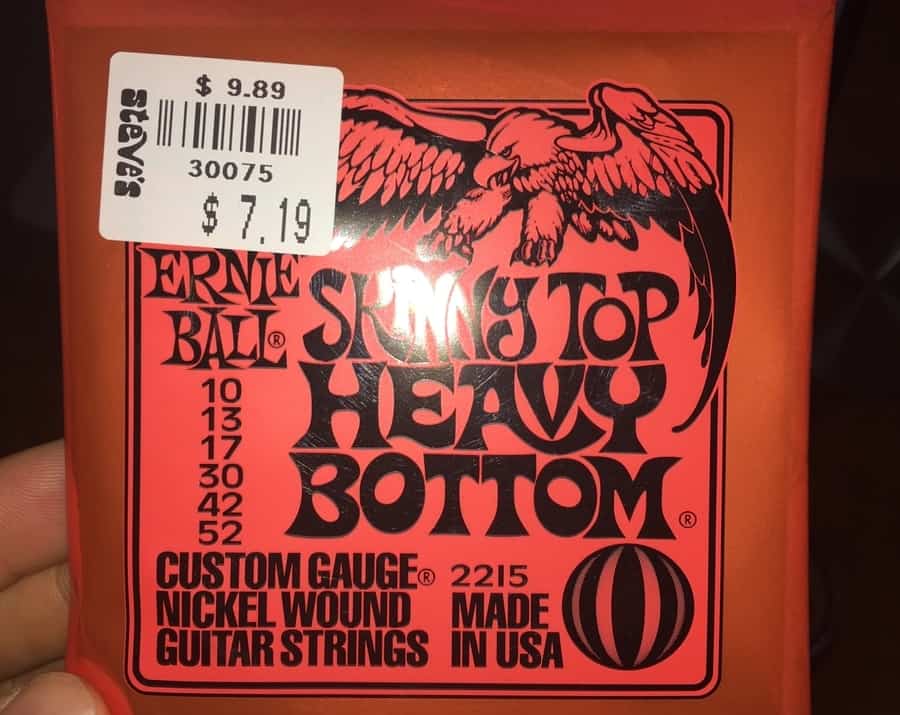
In some cases, you might actually be using the wrong guitar strings for your guitar.
For instance, if you a lot of bending and vibrato, and you’re using extremely thick-gauged strings, perhaps you should go down to a much “slinkier” set of guitar strings that allow for more bending and movement of the strings.
With that said, thicker-gauged strings could actually thwart the breakage of them, if you’re the type of player who doesn’t use much vibrato or bending. The reason for this is in the name of them: they’re much thicker and tend to be much stronger for that reason.
Additionally, you always want to make sure you’re purchasing the proper type of strings for your guitar as well, for instance, don’t put electric guitar strings on an acoustic guitar, and don’t put acoustic guitar strings on an electric guitar.
Another point to add is that it matters what gauge you’re using in the case of alternate tunings. In other words, if you’re tuning your guitar strings to be at a pitch they’re not meant for, it’s possible you’ll lead to breakage.
There are options out there where you can actually have guitar strings that are dedicated solely to a certain kind of tuning.
For instance, Ernie Ball creates guitar strings called “Heavy Top Slinky Bottom,” which means the lower guitar strings are much thicker and are meant more for detuned guitars.
6) Sharp Edges On The Frets
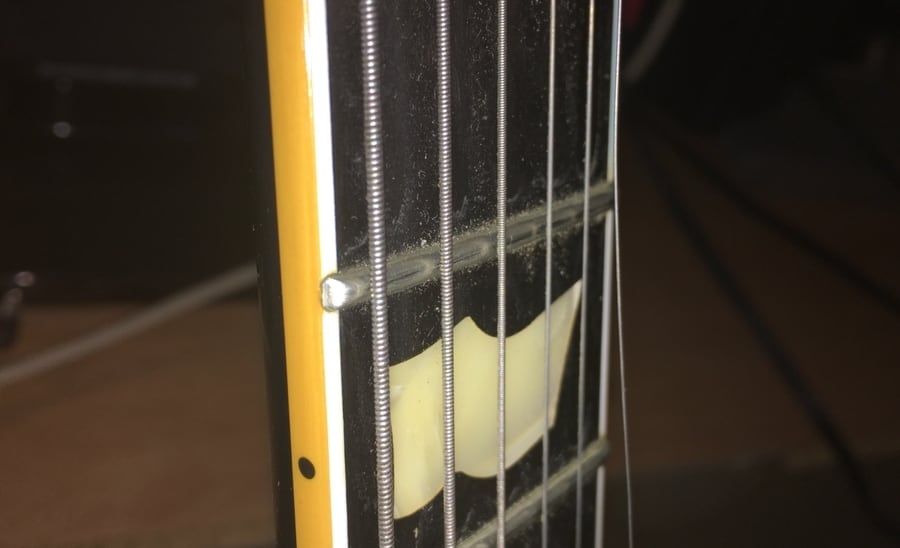
Another reason for string breakage has to do with the frets, which can be sharp or burred at particular edges over time. Even in the case of the guitar frets being brand new, the frets may have to be filed a bit with some sandpaper or with an actual file.
Some people use a very thin and gentle steel wool to rub off all the burs on the guitar frets, that way there are no sharp edges causing the string to snap.
7) The Pick
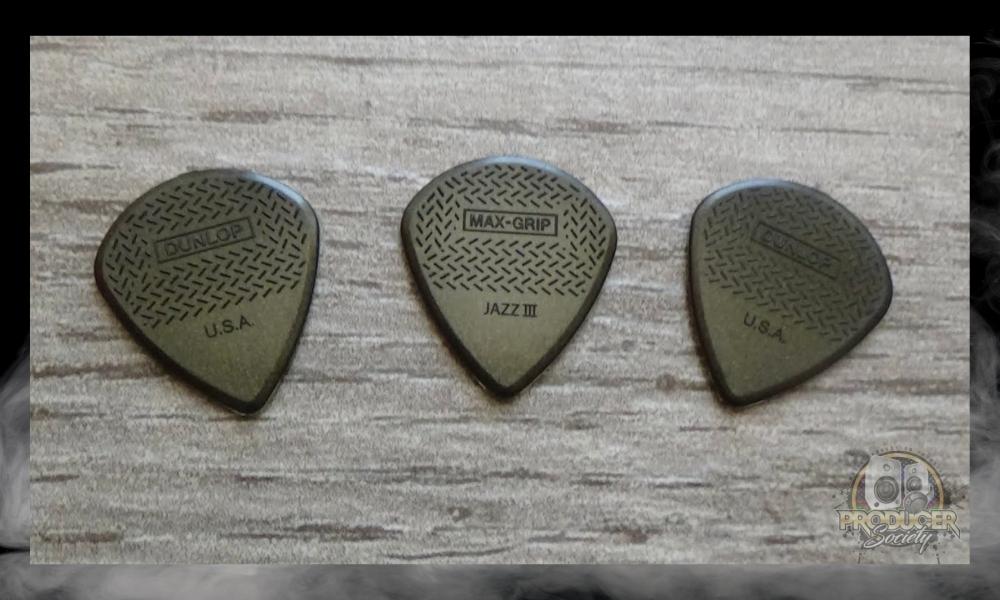
If you’re anything like me, you’re a big fan of using much thicker picks. I use the Jazz III MAX GRIP pick from Dunlop because it has a much thinner point and it allows for much faster and smoother alternate picking.
However, it’s also extremely thick, and if you’re not careful, you can really yank on the string with the pick depending on how close you put the point of the pick to the guitar.
In other words, how deep you put the pick toward the guitar body in relation to the string will determine how much of the pick is actually striking the guitar strings.
When using this kind of pick, it’s best to just have the tip of the pick hitting the guitar string, that way you can play a lot faster, but you’re also not striking the pick extremely hard and causing it to snap at one point.
YouTube Video Tutorial
Conclusion
In summary, there are a few reasons why your guitar strings might appear to snap spontaneously on their own, however, if we’re being entirely honest about it, there’s nothing you can really do to keep your guitar strings fresh and snap-free over a long period of time.

 Written By :
Written By :